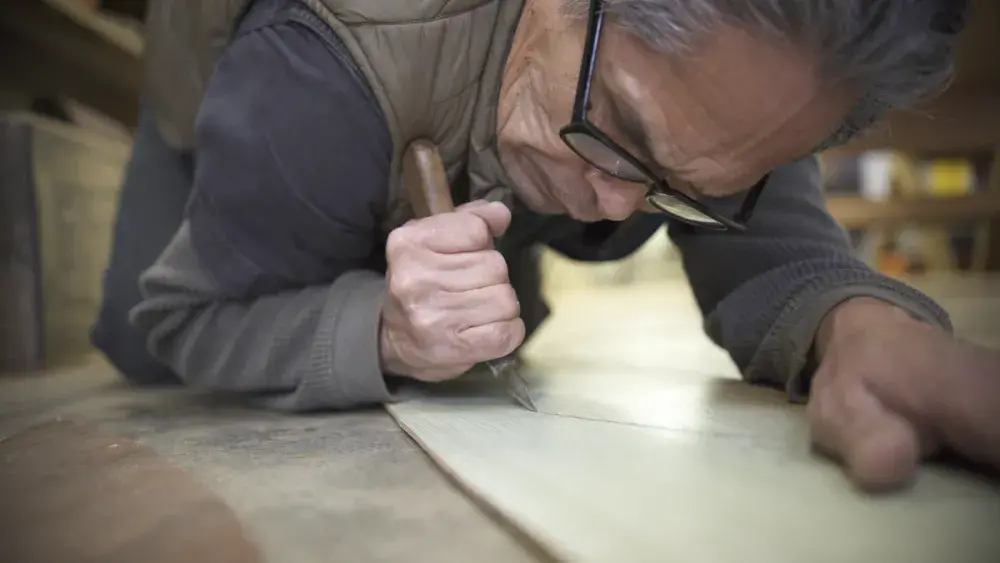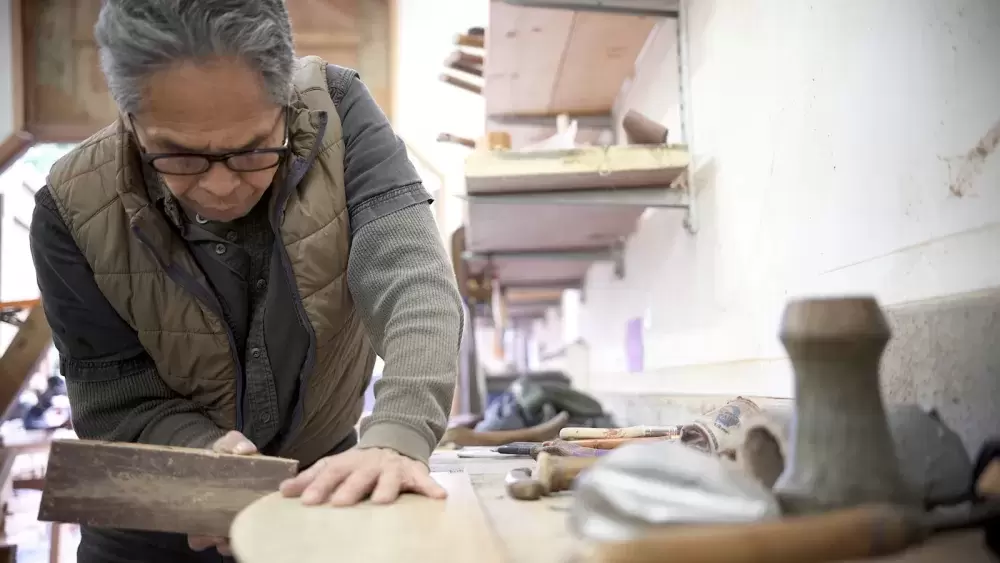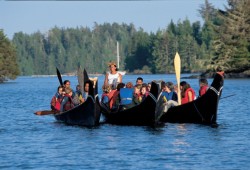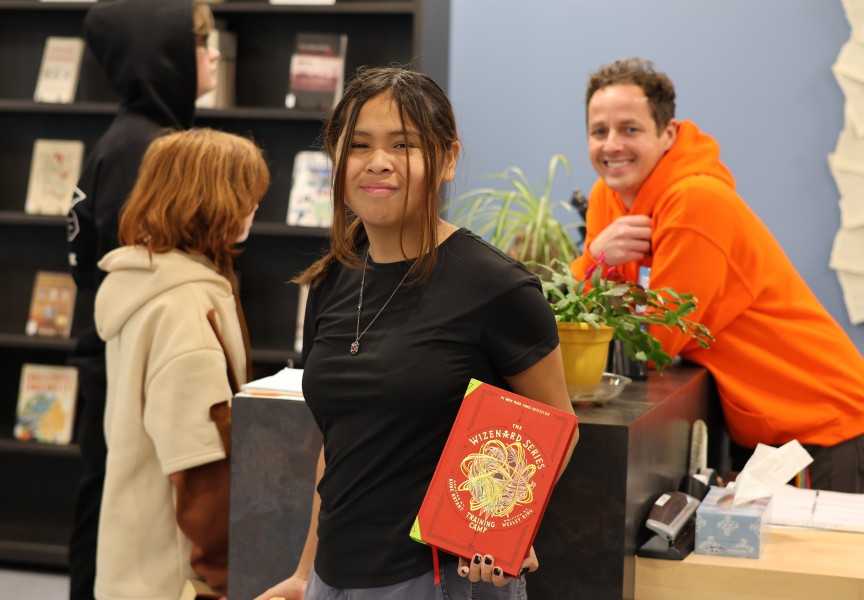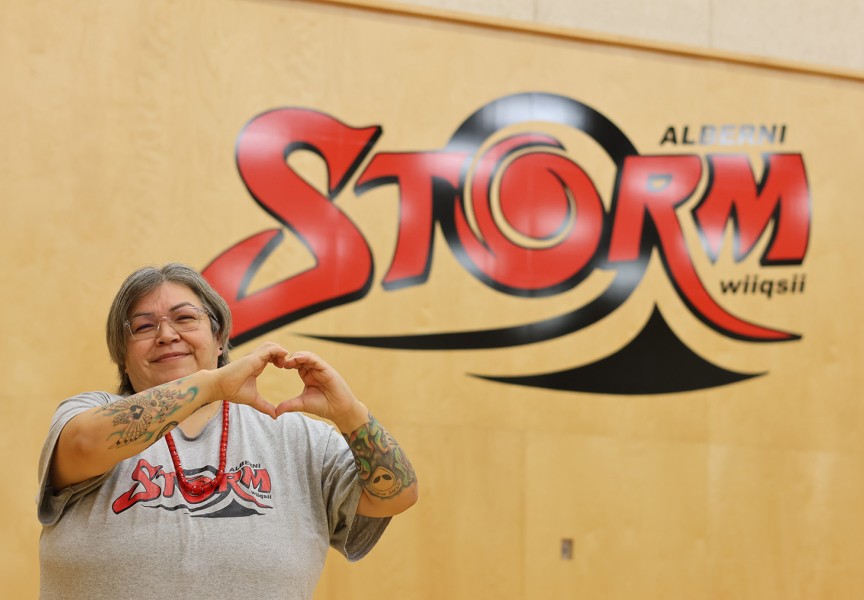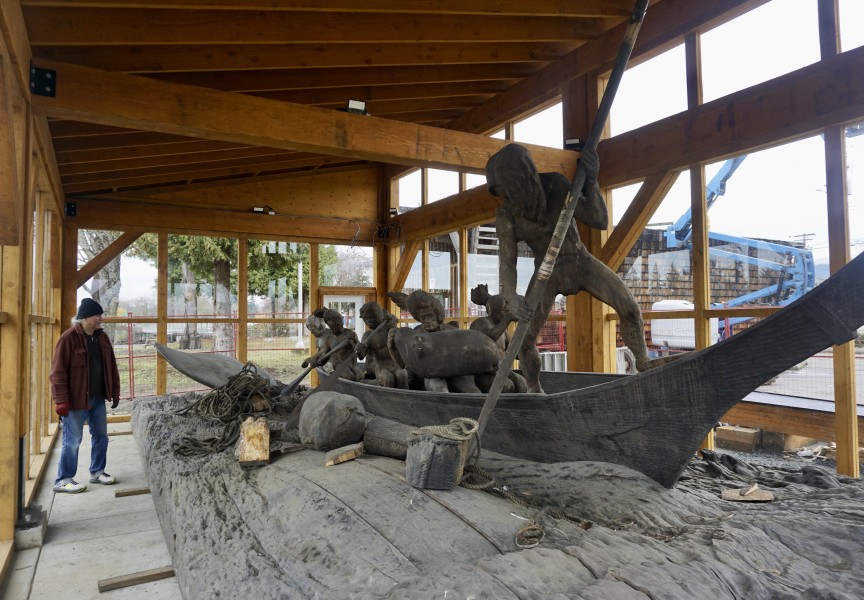A film featuring Tla-o-qui-aht First Nation master carver Joe Martin will have its world premiere on Wednesday, Oct. 6.
But Martin will not be at the screening, which will be shown at the Vancouver International Film Festival, which began Oct. 1 and continues until Oct. 10.
Though he was also one of the writers for the short film titled ƛaʔuukʷiatḥ (Tla-o-qui-aht) Dugout Canoe, Martin has yet to view the finished product, which is 10 minutes long.
“I haven’t seen it yet,” he said. “I’m carving a canoe right now. And I’m also working on two totem poles. I’m pretty busy.”
Those unable to attend the world premiere can still watch Tla-o-qui-aht Dugout Canoe online. Canadian audiences can purchase films being screened at this year’s festival up until Oct. 11 through the website www.viff.org
The film was written and directed by Steven Davies, a Coast Salish filmmaker with Snuneymuxw and European-Canadian ancestry.
Davies makes films that centre on spiritual, cultural and political themes in order to reconnect with Indigenous histories and epistemologies.
Davies made Tla-o-qui-aht Dugout Canoe through the National Screen Institute’s IndigiDocs program. This venture offers Indigenous filmmakers who have a concept for a 10-minute documentary the opportunity to create their film.
Tla-o-qui-aht Dugout Canoe will be shown as part of a program through VIFF’s Short Forum.
“I think it would be really sad, without having canoes around, dugout canoes,” Martin said in the film’s opening scene.
In the film Martin tells viewers how he had started working as a clearcut logger when he was 18. He was employed at a logging camp on Kennedy Lake and was furious logging was taking place over a creek, thus destroying the salmon stream.
“I refused to log a great big log over it, so they fired me,” Martin said. “And actually, when I got fired, it seemed there was a huge weight lifted off of my shoulders. I felt guilty about doing that.”
Later on, in 1984, Martin was part of a blockade staged on Meares Island, located on Tla-o-qui-aht First Nation territory. Those who were also part of the blockade include Martin’s late father, his late brother Bill and his brother Carl.
“We stayed there for three months,” Martin said.
That’s also when his passion began.
“We started carving canoes,” Martin said. “That’s why I’m still doing it I guess.”
Martin said besides being an act of resistance a canoe is also a symbol of freedom.
“I don’t see myself as an activist,” he said. “I’m just protecting our rights.”
Martin is also glad he’s found a lifelong pursuit.
“If I didn’t learn about making canoes, I think I would probably be dead by now,” he said. “I would have just got drinking and drugging, or maybe in jail or something. But I’m glad I learned how to do this.”
And it’s also extremely rewarding.
“Transforming a tree into a canoe is certainly transforming it into a life,” Martin said. “And that’s really a satisfying feeling.”
He also said canoe making fulfills another important part.
“If you’re working on canoes, you can certainly learn a lot about yourself,” he said. “Learning about patience and stuff like that can be a challenge sometimes.”
Martin is often assisted by others while making a canoe. The length of time required to carve a canoe obviously depends on its size.
Martin said to make a 22-foot canoe typically takes 15 days, if three individuals are working on it for 12 hours per day.
Martin also said he enjoys passing on his knowledge.
“I really like to inspire other people to work like this, to go out into nature and take only what you need,” he said. “There’s one teaching left by our ancestors that says Mother Nature will provide for our need but not our greed.”
Martin’s daughter Gisele is also featured in the film.
“I’ve been really lucky to witness what my dad does throughout my life, and it feels much deeper than just art, as art is perceived as something beautiful to look at,” she said. “It is like the practice of our traditional laws. It is our cultural lifeways that are being continued.”
Martin considers himself lucky to be doing what he’s doing as a carver.
“I feel like I’m very fortunate that I was able to learn to do this stuff,” he said. “Making harpoons and paddles and all these things I learned how to do with my hands. It’s a blessing. But also, it’s a responsibility to pass that on. And it’s a huge responsibility.
“Every time I carve a canoe it’s putting a canoe in the water that will serve our communities and families for years to come.”

